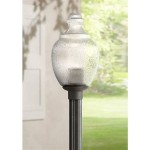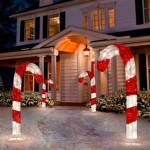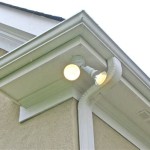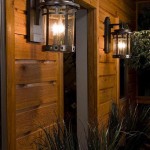How to Wrap Lights on an Outdoor Tree
Decorating outdoor trees with lights is a popular way to enhance the aesthetic appeal of a property, especially during the holiday season or for special events. A well-lit tree can create a welcoming and festive atmosphere. However, achieving a professional and visually appealing result requires careful planning and execution. This article provides a comprehensive guide on how to wrap lights on an outdoor tree, covering essential considerations, techniques, and safety precautions.
Planning and Preparation
Before embarking on the task of wrapping lights, proper planning and preparation are crucial for efficiency and safety. This involves assessing the tree, selecting appropriate lights, and gathering necessary equipment.
First, assess the size and type of tree. The height, width, and branching structure will determine the length of lights required. For a tall, dense tree, a greater length of lights will be necessary compared to a smaller, sparser tree. Consider the overall effect desired – a subtle glow, a bright display, or a specific pattern.
Next, choose the appropriate type of lights. LED lights are generally preferred for outdoor use due to their energy efficiency, longevity, and durability. They also generate less heat, reducing the risk of fire hazards. Incandescent lights, while less expensive, consume more energy and have a shorter lifespan. When selecting lights, pay attention to their suitability for outdoor use, as indicated by the packaging. Look for lights labeled as "outdoor rated" or "weather resistant."
Furthermore, select the color of the lights. While white lights offer a classic and elegant look, colored lights can create a more festive or whimsical atmosphere. Multi-colored lights, or lights in a specific color scheme, can be used to match the overall decor or theme of the event.
Calculate the length of lights needed. A general rule of thumb is to use 100 lights per foot of tree height. However, this is just an estimate, and the actual length required may vary depending on the density of the tree and the desired brightness. To calculate more accurately, measure the circumference of the tree at its widest point and use the formula: Circumference x Number of wraps per foot (desired density) = Length of lights needed per foot of height.
Gather the necessary equipment, including a sturdy ladder, work gloves, outdoor-rated extension cords, light clips or zip ties, and a measuring tape. The ladder should be tall enough to reach the top of the tree safely. Work gloves will protect hands from branches and potential electrical hazards. Outdoor-rated extension cords are essential for connecting the lights to a power source and must be designed to withstand weather conditions. Light clips or zip ties will secure the lights to the branches. A measuring tape is useful for calculating the length of lights needed and ensuring even spacing.
Test the lights before starting the wrapping process. Plug in the lights to ensure all bulbs are working and that there are no damaged sections. This will save time and effort by preventing the need to replace bulbs or troubleshoot problems after the lights are already on the tree.
Wrapping Techniques
Several techniques can be employed to wrap lights on an outdoor tree, each offering a different aesthetic and level of complexity. Choosing the right technique depends on the desired effect and the structure of the tree.
The spiral wrapping technique involves wrapping the lights around the tree trunk and branches in a continuous spiral pattern. Start at the base of the trunk and work upwards, tightly wrapping the lights around the trunk. As the trunk branches out, follow each branch individually, maintaining a consistent spiral pattern. This technique is relatively simple and creates a uniform, evenly lit effect. This technique requires careful measuring to ensure even spacing.
The branch wrapping technique involves wrapping the lights around individual branches, highlighting their natural shape and structure. This technique is more time-consuming but can create a more detailed and visually interesting display. Start at the base of each branch and wrap the lights outwards, following the contour of the branch. This technique is particularly effective for trees with prominent branches.
The net wrapping technique involves using pre-made light nets that are draped over the tree. This technique is the quickest and easiest, but it may not provide the most uniform or aesthetically pleasing result, especially for trees with irregular shapes. Simply drape the net over the tree, ensuring it is evenly distributed, and secure it to the branches with light clips or zip ties.
Regardless of the technique chosen, it is important to maintain consistent spacing between the lights. This will create a more uniform and visually appealing display. Use a measuring tape to ensure that the lights are evenly spaced, both horizontally and vertically. Overlapping or clustering the lights can create uneven brightness and detract from the overall effect.
Secure the lights to the branches using light clips or zip ties. These will prevent the lights from sagging or shifting in the wind. Place the clips or zip ties at regular intervals along the branches, ensuring that the lights are securely fastened but not overly tightened. Avoid using nails, staples, or other sharp objects to secure the lights, as these can damage the tree and create potential electrical hazards.
Conceal the wires as much as possible. Tuck the wires behind branches or along the trunk to minimize their visibility. This will create a cleaner and more professional look. Use green or brown wire extensions to further camouflage the wires against the tree's foliage. Avoid running wires across walkways or other areas where they could pose a tripping hazard.
When wrapping lights on taller trees, it may be necessary to work in sections. Start at the bottom of the tree and wrap the lights upwards, stopping at a convenient point. Then, move the ladder and continue wrapping the lights from that point. This will make the task more manageable and reduce the risk of falling from the ladder.
Periodically step back and assess the overall effect. This will allow adjustments to be made to ensure the lights are evenly distributed and that the desired effect is being achieved. Adjust the spacing or placement of the lights as needed to create a balanced and visually appealing display.
Safety Precautions
Safety is paramount when wrapping lights on an outdoor tree. Working with electricity outdoors presents potential hazards, and it is essential to take precautions to minimize the risk of accidents.
Always use outdoor-rated extension cords. Indoor extension cords are not designed to withstand weather conditions and can pose a fire hazard if exposed to moisture. Outdoor-rated extension cords are specifically designed to be used outdoors and are more resistant to water and other environmental factors.
Inspect the lights and extension cords for damage before use. Check for frayed wires, cracked insulation, or other signs of wear and tear. Damaged lights or extension cords should not be used, as they can pose a serious electrical hazard. Replace any damaged components before starting the wrapping process.
Avoid using lights near water sources. Water conducts electricity, and using lights near water sources, such as swimming pools or ponds, can create a dangerous electrical shock hazard. Ensure that the lights are placed at a safe distance from any water sources and that all connections are properly sealed.
Do not overload electrical circuits. Overloading a circuit can cause it to overheat and potentially start a fire. Check the wattage rating of the lights and extension cords and ensure that they do not exceed the capacity of the electrical circuit. If necessary, use multiple circuits to distribute the load.
Use a ground fault circuit interrupter (GFCI) outlet. A GFCI outlet is designed to detect electrical imbalances and automatically shut off the power in the event of a fault. This can help prevent electrical shocks and protect against potential hazards. If a GFCI outlet is not available, use a portable GFCI adapter.
Be cautious when using a ladder. Ensure the ladder is placed on a stable and level surface. Avoid overreaching or leaning too far to one side, as this can increase the risk of falling. Have someone hold the ladder for added stability. Wear appropriate footwear with good traction.
Work in dry conditions. Avoid wrapping lights during rain or snow, as this can increase the risk of electrical shock. Wait for the weather to clear before starting the wrapping process. If it starts to rain or snow while wrapping the lights, stop immediately and seek shelter.
Unplug the lights before making any adjustments or repairs. This will prevent accidental electrical shocks. Always disconnect the power before handling any electrical components.
Be aware of overhead power lines. Maintain a safe distance from overhead power lines when working on outdoor trees. Contact with power lines can be fatal. If the tree is located near power lines, consider hiring a professional to wrap the lights.
When removing the lights after the season, follow the same safety precautions. Unplug the lights before removing them from the tree. Carefully unwind the lights and store them in a dry place. Inspect the lights for damage before storing them.
By following these safety precautions, the risk of accidents can be minimized and a safe and enjoyable experience can be ensured when wrapping lights on an outdoor tree.

Wrap Lights On An Outdoor Tree In 6 Easy Steps Love Our Real Life

How To Wrap A Tree With Lights

How To Wrap A Tree In Lights Designers

How To Put Lights On A Large Outdoor Tree Ryno Lawn Care Llc

How To Wrap Trees With Outdoor Lights In 6 Easy Steps Omysa

Guide To Wrapping Trees With Commercial Holiday Lights

Permanent Decorative Tree Wraps

How To Wrap A Tree With Lights

How To Wrap A Tree In Lights Designers

How To Wrap A Tree With Lights
Related Posts







